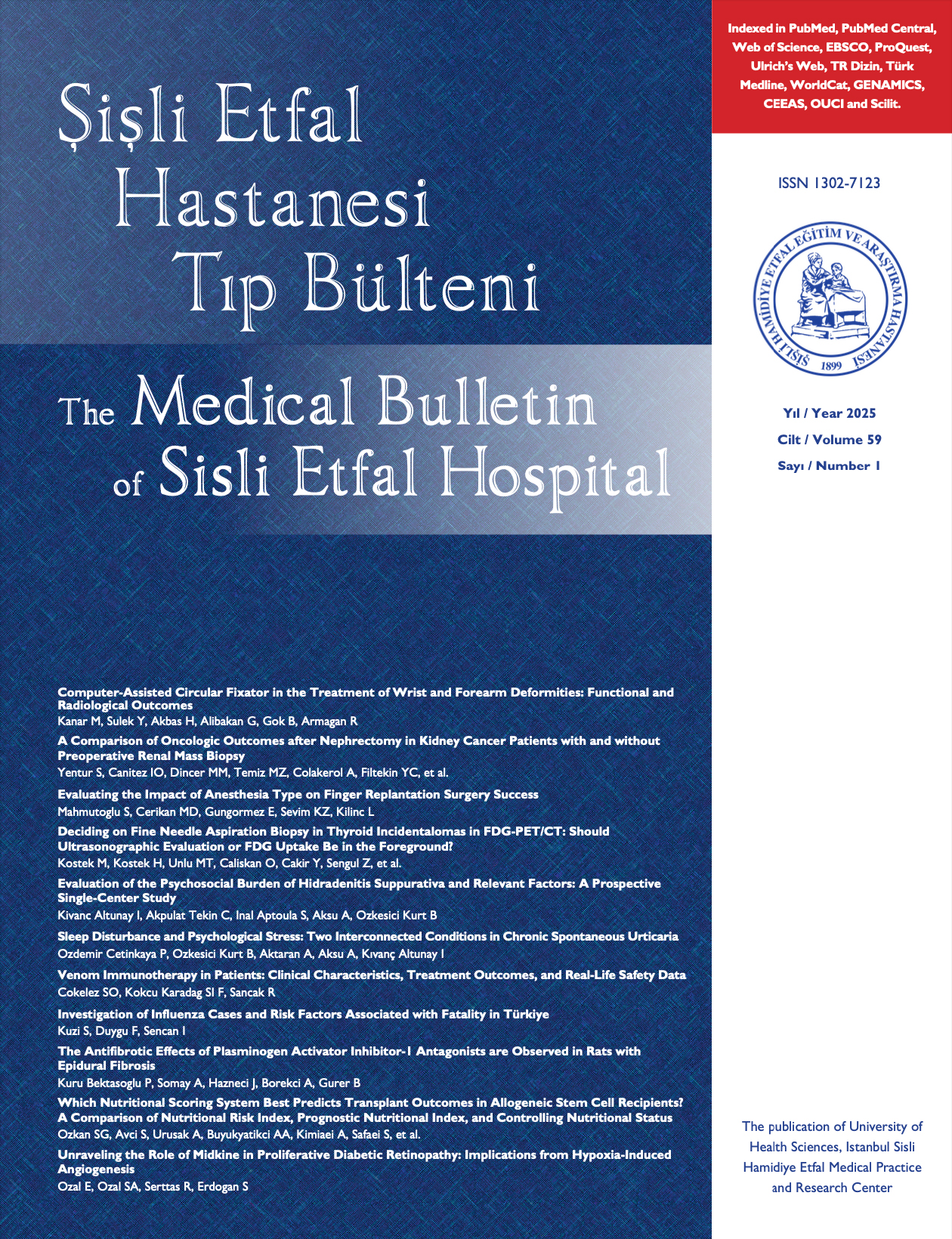
Human Papilloma Virus Frequency and Genotypes; Evaluation of the 4879 Screenings Made with Polymerase Chain Reaction and Chip Array Between 2001 and 2019 in Istanbul
Gurcan Vural1, Nedim Polat21Department of Pathology, Okan University Hospital, Istanbul, Turkey2Department of Pathology, Beykent University Faculty of Medicine, Istanbul, Turkey
Objectives: The aim of this study is the documentation of human papilloma virus (HPV) frequency and types seen in the city of Istanbul, Turkey, as well as evaluation of the relationship between these subtypes and cytological and pathological diagnoses.
Methods: 4879 cases were studied in our molecular pathology department between 2001 and 2019 in Istanbul. Between 2001 and 2010, 1692 cases were screened for HPV 6, 11, 16, 18, 31, and 33 by conventional hybridization and polymerase chain reaction (PCR). Since 2011, up to 49 HPV typing has been performed for 3187 cases with chip array. The cases were referred to the pathology center and the hospital pathology department by clinicians for screening before HPV vaccination and on the observation of precancerous changes and koilocyts in cytological-histopathological evaluations.
Results: In this study, the frequency of HPV was found to be 10.8% (527 HPV-positive cases). Among these, 348 cases were high-risk groups, whether or not they were previously associated with a low-risk group. When we look at the distribution of the cases according to the high-risk HPV types, HPV 16 is the most common type. The frequencies of occurrence of other HPV types are as following: HPV16: 41.7%, HPV31: 11.7%, HPV52: 7.9%, HPV51: 7.1%, HPV33: 6.9%, HPV45: 6.5%, HPV18: 6.3%, HPV39: 6.1%, and HPV58: 5.8%. It was further found that multiple infections were 28% of high grade squamous intraepithelial lesion cases. HPV frequency was 38% and 72%, respectively, in cases with cytologically or histopathological precancerous, low-grade squamous intraepithelial lesion, and HSIL changes. As a final note, HPV was detected in 9 of 10 cases with cervical cancer (90%). Only 1 adenocarcinoma case detected in the series was a double infection with HPV types 18 and 45.
Conclusion: HPV 16 was the most common type found in this study. It is followed by types 31, 52, 51, 33, 45, 18, 39, and 58, respectively. The most common association observed in double infections was between HPV 16 and 58. It was also observed that the incidence of HPV in the city of Istanbul, Turkey, was similar to other developed countries. As a final note, in addition to screening tests, PCR and chip array studies should be conducted and the community should be informed about preventive medicine and the importance of condom use.
Serviksin prekanseröz ve malign lezyonlarinda human papilloma virus sikliği ve genotipleri; İstanbulda 2001 -2019 yillari arasinda PCR ve chip array ile yapilan 4879 taramanin değerlendirmesi
Gurcan Vural1, Nedim Polat21Okan Üniversitesi Hastanesi Patoloji Bölümü, İstanbul2Beykent üniversitesi Tıp Fakültesi Patoloji Aanabilim Dalı, İstanbul
Amaç: Türkiyede İstanbulda HPV (Human Papilloma Virüs) sıklığı ve tiplerinin dokümante edilmesi yanısıra, saptanan bu alt tipler ve sitolojik ve patolojik tanıların ilişkisinin değerlendirilmesi.
Gereçler ve Yöntem: İstanbulda 2001-2019 yılları arasında moleküler patoloji departmanımızda 4879 olgu çalışılmıştır. 2001-2010 arasında 1692 olgu klasik hibridizasyon ve PCR (polimeraz zincir reaksiyonu) ile HPV 6,11,16,18, 33 için taranmıştır. 2011 yılından itibaren chip array ile günümüzde kırkdokuza varan HPV tiplemesi 3187 olgu için yapılmıştır. Olgular sitolojik-histopatolojik değerlendirmelerde prekanseröz değişiklik ve koilosit görülmesi üzerine veya tarama amacıyla ya da HPV aşılaması öncesi klinisyenler tarafından patoloji merkezine ve hastane patoloji departmanına yönlendirilmiştir.
Bulgular: Bu çalışmada HPV sıklığı %10,8 olarak saptanmıştır (527 HPV-pozitif olgu). Bunlar içinde 348 olgu beraberinde düşük riskli grup olsun ya da olmasın yüksek riskli gruptur. Olguların yüksek riskli HPV tiplerine göre dağılımına baktığımızda HPV 16 (%41,7), HPV 31 (%11.7), HPV 52 (%7.9), HPV 51 (%7.1), HPV 33 (%6.9), HPV 45 (%6.5), HPV 18 (%6.3), HPV 39 (%6.1) ve HPV 58 (%5.8) olarak belirlenmiştir. HSIL (yüksek dereceli skuamöz epiteliçi lezyon) olgularında çoklu enfeksiyon sıklığı %28dir. Sitolojik ya da histopatolojik olarak prekanseröz, LSIL (düşük dereceli skuamöz epiteliçi lezyon) ve HSIL değişiklik gösteren olgularda HPV sıklığı sırası ile %38 ve %72dir. Servikal kanser saptanan 10 olgunun 9unda HPV saptanmıştır (%90).
Sonuç: Çalışmada en sık HPV 16 saptanmıştır. Onu sırası ile HPV 31, 52, 51, 33, 45, 18, 39 ve 58 takip etmektedir. Çift enfeksiyonlarda gözlenen en sık birliktelik HPV 16 ve 58 arasında olmuştur. İstanbulda HPV sıklığının gelişmiş ülkelerden çok farklı olmadığını görülmektedir. Tarama testleri, PCR ve chip array çalışmaları yanı sıra toplum koruyucu hekimlik açısından bilgilendirilmeli, prezervatif kullanımının önemi vurgulanmalıdır (SETB-2021-01-022).
Manuscript Language: English



















